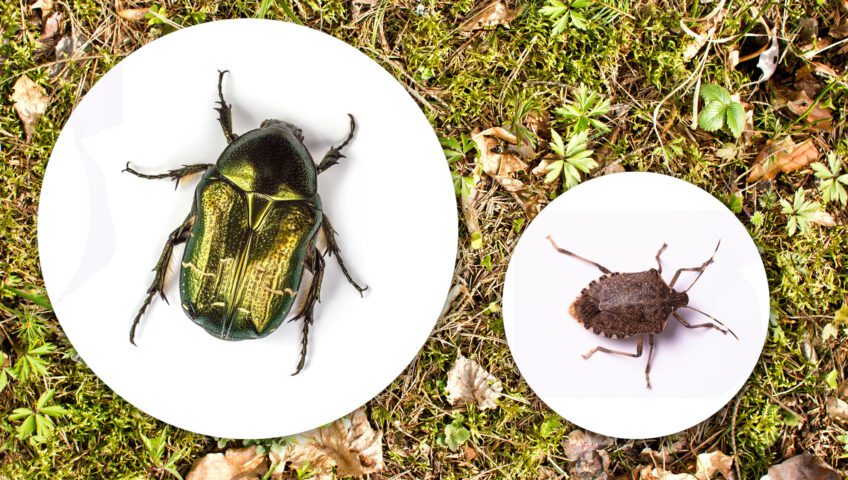When it comes to the world of insects, it can be easy to lump them together as “bugs.” But true bugs are a distinct order within the insect world, as are beetles. The two are often confused, there are distinctions that can help us differentiate between them.
Bugs
True bugs belong to the order Hemiptera, and they are known for certain characteristics. Here are some key features that define bugs:
Piercing-sucking mouthparts: One of the most distinguishing features of bugs is their specialized mouthparts, designed for piercing and sucking. These mouthparts are used to feed on plant sap, other insects, or even blood in the case of bedbugs.
Incomplete metamorphosis: Bugs undergo a type of metamorphosis called “incomplete” metamorphosis. They pass through three life stages: egg, nymph and adult. The nymphs resemble smaller versions of the adult bug but lack wings.
Forewings and hindwings: Bugs have four wings, with the front pair (forewings) usually thicker and leathery, while the hindwings are membranous. These wings often create a distinctive “X” shape when at rest.
Varied appearance: Bugs come in a wide range of shapes, sizes and colors, making them a diverse group of insects. Some well-known examples of bugs include cicadas, stink bugs and giant water bugs.
Beetles
Beetles belong to the order Coleoptera, and they are the largest group of insects on the planet. Here are some distinguishing characteristics of beetles:
Chewing mouthparts: Unlike bugs, beetles have chewing mouthparts. They use their mandibles to eat a variety of foods, including plants, fungi, other insects and even decaying matter.
Complete metamorphosis: Beetles undergo complete metamorphosis, which means they have four distinct life stages: egg, larva, pupa and adult. The larval stage often looks radically different from the adult beetle.
Hard forewings (elytra): The most iconic feature of beetles is their front wings, known as elytra. These structures are hard and protective, covering the delicate hindwings beneath. When at rest, the elytra meet in a straight line down the back, forming a protective shield.
High diversity: Beetles are incredibly diverse, with more than 350,000 species described so far. They can be found in almost every habitat on earth, from rainforests to deserts, and they come in a vast array of shapes, sizes and colors.
Varied lifestyles: Beetles have adapted to a wide range of lifestyles. Some are herbivores, feeding on plants, while others are scavengers, predators or even parasites.
In summary, while both bugs and beetles fall under the broader category of insects, they belong to distinct orders with unique characteristics. Understanding these differences can help us appreciate the incredible diversity of the insect world and the roles these creatures play in ecosystems around the world.
Remember, at Slug-A-Bug, we know our insects – particularly the pests. Whether you’re having trouble with termites, ants, roaches, silverfish or whatever, give us a call at (321) 259-7844 for a free, no-obligation evaluation.
For more information:
https://www.merriam-webster.com/wordplay/usage-of-bug-insect-beetle
https://www.sciencedirect.com/topics/immunology-and-microbiology/hemiptera
https://www.biologyonline.com/dictionary/incomplete-metamorphosis
https://edis.ifas.ufl.edu/topics/coleoptera
https://www.britannica.com/animal/beetle
https://royalsocietypublishing.org/doi/10.1098/rsbl.2022.0559
